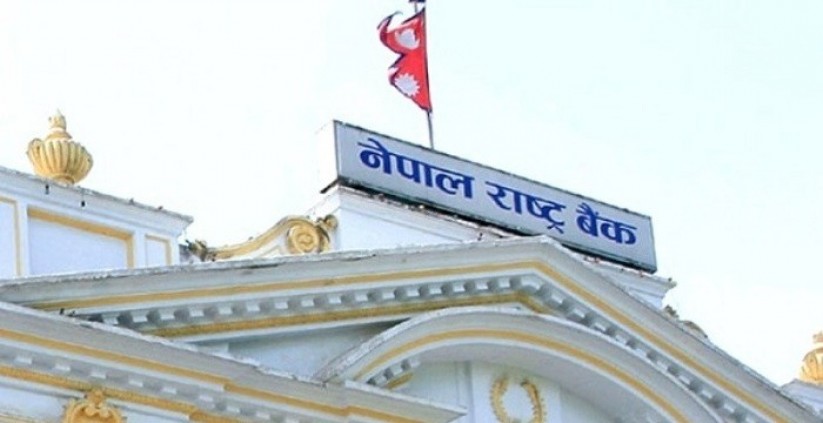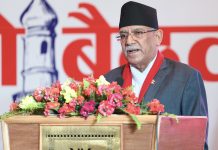Overview
The issuance of monetary policy is a regular annual phenomenon for Nepal Rastra Bank in the context of Nepal. But this regularity since FY 2059/60 is compelled to comply with the most irregular financial and economic scenario of the world history. Due to COVID-19, the global economic and financial system has disrupted severely.

This has tremendous social, health, and human impact attached to it. The economic and financial impact is so adverse that it is estimated to be bigger than the great depression of the 1930s and broader than the financial crisis of 2008. The impact is predicted to stay longer and larger as per different studies conducted by pioneer global institutions like the World Health Organization (WHO), the International Monetary Fund (IMF) and the World Bank.
Nepalese economic and financial sector cannot remain aloof by such a huge global pandemic. Nepal also imposed a lockdown for 4 months as the control measure to prevent the spreading of COVID-19 throughout the country. This locked business and economic activities throughout the country. Almost zero levels of industrial production and trading have brought huge disruption to the economy. Interrupted supply chain, increased unemployment, sickened tourism, and hospitality sector, decreased domestic trade, reduced industrial production, and productivity, etc. all have contributed aggregately for the severe economic downfall of Nepal. The more concern is that there is significant unpredictability about more dimensions and longevity of the COVID impact in the future.
It has to be understood that there is a significant correlation between the economic situation and financial sector favoritism. This means this economic contraction of the Nepalese economy has presented hand full of unfavorable in the financial sector too. The situation is such that the economy is not fostering the financial sector and the financial sector cannot uplift the economy with prompt measures. Despite all these hard realities, the Government of Nepal has developed a fiscal policy with high budget volume and highly ambitious economic goals for FY 2077/78. To be frank, the budget of Nepal for FY 2077/78 has not provided a handful and hopeful immediate and long-term measures to ensure the economic revival of Nepal.
Hence, the responsibility to facilitate such tough fiscal goals and ensure economic resource mobilization has shifted to the monetary policy for FY 2077/78. That’s why the monetary policy for FY 2077/78 has come under the challenging situation of minimizing COVID influence in the Nepalese economy along with adequate liquidity in the financial system with ensuring uplift of down gone industrial and commercial sector of Nepal. Admirable Aspects of the Policy
The monetary policy for FY 2077/78 was supposed to address the economic revival need and financial sector survival urgency of Nepal. In this regard, it has not been largely disappointing. The unchanged CRR and SLR simply address the need for liquidity sufficiency in the banking system of Nepal. This has not intervened in liquidity availability. This is futuristic as well. The current very short-term excess liquidity in the banking system is bound to be in equilibrium as the economic activities slowly and steadily went into the revival stage. This is likely to comply with future lending opportunities which are bound to happen after a while in this fiscal year. The bank rate of 5% is dared to make the cost of funds for lending cheaper to make cheaper credit available to most needy sectors of the economy.
The revisions and adjustments regarding priority sector lending is a commendable aspect of the policy to ensure COVID constraints are addressed correctly in multiple sectors of the economy. Mainly, provisions for agriculture sector is highly admirable. The expansion of priority sector lending in agriculture from 10% to 15% with credit volume countable in outstanding balance is a very right move in the current context of the Nepalese economy.
With Agriculture Development Bank being provided the leadership for agriculture credit and issuance of agriculture bond along with loan figure countable in outstanding terms is likely to make agriculture credit more fair and accessible to a needy class of people. The provision of cheaper loans for hydro-electricity projects, transmission line projects, and energy trade is sure to facilitate Nepalese electrification (rural and urban) and domestic as well as trans-border energy trade.
Moreover, provision set for issuance of energy bond can be expected to bring in more pool of t scattered capital for huge and stable funding of energy projects in Nepal. Tourism has also been highly prioritized through concessional credit and a simplified system of credit issuance is also highly admirable about the policy. All these priority sectors related measures are likely to boost up economic activities from present to future if mindfully monitored and rationally reviewed during the implemented period of the policy.
The policy has best tried to address the financial sector need within COVID constraints to swiftly revive the economic sector of Nepal. The provision of commercial banks compelled to lend 15% of their credit in loan of Rs.1 crore in small, micro, and medium industries is a fair call. This has tried to ensure the inclusion of small loan seekers in the loan portfolio of banks guaranteeing genuine financial assistance to them. This will discourage the banks’ attitude of grabbing big fish credit clients ignoring the small and rightly needing ones.
The policy had tried to foster innovative entrepreneurship and boost up productivity-enhancing as well as high employment-generating industries with a concessional loan at a mere 5% interest. This is an excellent move to make a sure cheaper loan is available to most deservingly potential sectors of the economy. The policy had tried to make fair availability of concessional loans in more needy sectors promoting and prioritizing the goal of fair credit accessibility at cheaper interest rates and within easy processing with simplified paper works.
Key Highlightable Aspects
- Cash Reserve Ratio (CRR) of 3% for banks and financial institutions
- Statutory Liquidity Ratio (SLR) of 10% for commercial banks, 8% for development banks and 7% for finance companies
- Bank rate of 5% to be maintained
- Total priority sector lending in agriculture by commercial banks to be increased to 15% from 10% by the end of Ashadh 2080
- Agriculture Development Bank to be created as a leader for agriculture credit with the right to issue agriculture bond for BFIs and agriculture credit cards for farmers
- Energy sector lending to be pushed to 10% by the end of Ashadh 2081 by commercial banks
- Commercial banks with experience in energy sector lending can issue ‘Energy Bonds’
- Commercial banks have to lend at least 15% of their total credit till Ashadh, 2081 in micro, small and medium scale sector having loan volume of less than Rs.1 Crore
- Facilitation of easy and subsidized credit facilities for agriculture, tourism, aviation, hotel, and transportation sector
- Concessional loan facilities at 5% for industries with innovative entrepreneurship, productivity enhancement, and employment generation
- By the end of Ashadh, 2081, development banks and finance companies have to provide 20% and 15% of their total credit lending in agriculture, micro-enterprise, small industries, energy tourism, and cottage industries
- Up to 70% of share value can be issued as margin lending credit
- Refinance facility at 1% for import oriented and sick industries, 2% for cottage/small and medium industries, and 3% for regularly specified sectors to be made available for BFIs. The interest rates on which will be payable by loan clients at 3%, 5%, and 5% respectively.
- The moratorium period for least affected sectors due to COVID-19 is extended till Paush 2077, for moderately affected sectors till Chaitra 2077 and till Ashadh, 2078 for most affected ones
- Additional facilities (other than existing ones) for BFIs going for merger and acquisition till Ashadh end 2078 to persisted till the end of Ashadh, 2079
- CCD ratio to be maintained at 85% from existing 80% till Ashadh end of 2078
- Debenture issue period for commercial banks extended to Ashadh, 2079
- Suspension of the countercyclical buffer
- BASEL 3 to be initiated in national level development banks
- The maximum interest rate chargeable by microfinance is set at 15%
- No new licensing for microfinance and promotion of merger of existing ones
- Establishment of national payment switch
- Simplification of LC for import-export promotion and facilitation
- The maximum limit for service charge on loan processed to be maintained at 0.75% for commercial banks, 1% for development banks, 1.25% for finance companies and 1.5% for microfinance
- No penalties on loan repayment with the time extension, re-structuring and re-scheduling due to COVID impact
- No charges on inter-bank ATM withdrawals till the prevalence of COVID influence
(Source: Monetary Policy 2077/78)
The Policy seems to have adopted the right measures to address the revival need of different sectors of the Nepalese economy. The extended loan repayment period and cheap refinance facilities have been correctly tried to fit in depending upon prioritized urgency need and COVID driven adverse effects in different sectors of the economy. The more the severe effect on any sector, there has been an extended moratorium period ranging from 6 to 12 months during the implemented period of FY 2077/78. This has transferred the financial burden for a prolonged period with no immediacy of repayment need in an adverse business scenario. This will help in slow but steady booming up and revival these highly harmed sectors.
Though this is likely to delay and disturb regular liquidity flow into the banking system, it is the most suitable measure in the current context of our economy. The policy also has ensured the mobilization of refinance reserve at not more than 5% interest rate payable by loan clients. This is sure to provide short-term relief in terms of working capital financing needs and survival initiatives.
Apart from this, the monetary policy 2077/78 has relaxed the CCD requirement of 80% moving it up to 85%. This will ease more liquidity for the priority sector and concessional or subsidized lending. The policy also has enforced priority sector lending need of 20% and 15% for development banks and finance companies respectively. This will bring in more capital for most potential sectors like agriculture, micro-enterprise, small and medium industries, etc.
The issuance, volume, and practice of letter of credit (LC) to facilitate international trade is another admirable aspect of the policy. The eased provisions for margin lending with revised regulatory provisions to address the capital market can be expected to do good for the share market and investors in securities. Aimed implementation of BASEL 3 in national level development banks and additional facilities for BFIs going for mergers and acquisition is likely to make the financial sector more sustainable and supportive to suppress existing catastrophic impact arisen from COVID-19.
What is more admirable about this monetary policy is its readiness to promote the digital Nepal framework and ensure more secure banking through customer justice. The commitment of extended volume and safe mobile banking, POS transactions, and ATM services is more of an outcome proven by their relevancy in the COVID crisis and lockdown. The establishment of national payment switch, amended provisions for licensing of payment wallets/portals, promotion of digital payment in the public and private sector, etc. are all aimed at making digital payment mechanisms better and broader.
Regarding customer protection, the policy has ranged loan processing service charge from 0.75% to 1.5% only making it fair enough burden to the customers. The restriction of interest chargeable by microfinance up to only 15% along with the implementation of proper base rate calculation system for microfinance has ensured cheap credit accessibility even in rural areas of Nepal. Charge-free any ATM transaction in interbank ATM outlets till the prevalence of COVID impact is an appreciable benefit presented to general bank customers.
Conclusion
No one can deny the severe global economic and financial impact caused due to the pandemic of COVID-19. Nepal also cannot remain away from such a dark situation of economic disruption and financial system disturbance. The downsized trading, industrial and commercial activities during lockdown has drastically downsized economic growth with risen unemployment and business lockouts. The fiscal policy for 2077/78 has come with rather unclear and relatively very low relief measures for the sophisticated economic sector of Nepal.
This has transformed the responsibility of economic revival and financial sector survival to Nepal Rastra Bank to be addressed through monetary policy for FY 2077/78. It has to be designed as a roadmap to aid immediate and long-term economic as well as financial downfall due to pandemic scenarios. It has to be sufficient enough to provide relief measures for all harmed sectors of the economy to uplift and ensure the sustainability of disrupted economic and financial mechanisms.
For this, the monetary policy of FY 2077/78 has tried its best to ensure proper liquidity sufficiency in the financial system. For this, the changes and no changes in open market operation required reserves, and bank rates have been done rationally. The amendments in priority sector lending, diversification bank credit to small and projection-based projects, simplification of the concessional and subsidized loan with widened bracket, extended moratorium period, etc. have been rightly designed to make bank credit easily accessible at cheaper interest rate wider credit needing customer base.
The policy has tried to best suit the shorter relief, additional capital, and long-term financial needs of COVID affected sectors through provisions of cheaper interest on the loan and refinance facilities. In this financial crisis, it has made admirable provisions for merger/acquisition, restriction in interest chargeable by microfinance, restriction of service charge, promotion of digital payment system, relaxed policies for international trade, etc. etc. for making fair and stable banking environment in the financial system of Nepal. In this regard, most of the policies advocated in monetary policy 2077/78 good fits the need of the current economic and financial situation of Nepal.
There is a very little scope where it could have been better or specific. What needs to be admitted is that some of the provisions set are automatically implementable within the current mechanism. But few need ratification of an existing implementation mechanism. To be specifically frank, just like previous monetary policies, this also has the challenge of being implemented as the way it has been drafted. However, there is no option this time around than committedly implementing this policy as it is highly concerned with the revival of highly infected sectors of the Nepalese economy.
Yet, it can be concluded that the policy has logically designed with admirable aspects addressed through new and revised provisions to support the economic upliftment of Nepal. One can admit nothing better could have been planned for the economic revival of Nepal if its implementation direction remains right in steadying the drowning economic ship of Nepal with the potential bright revival of the economy.
Written by
Ravi Dhungel
Nepal Bank Limited















